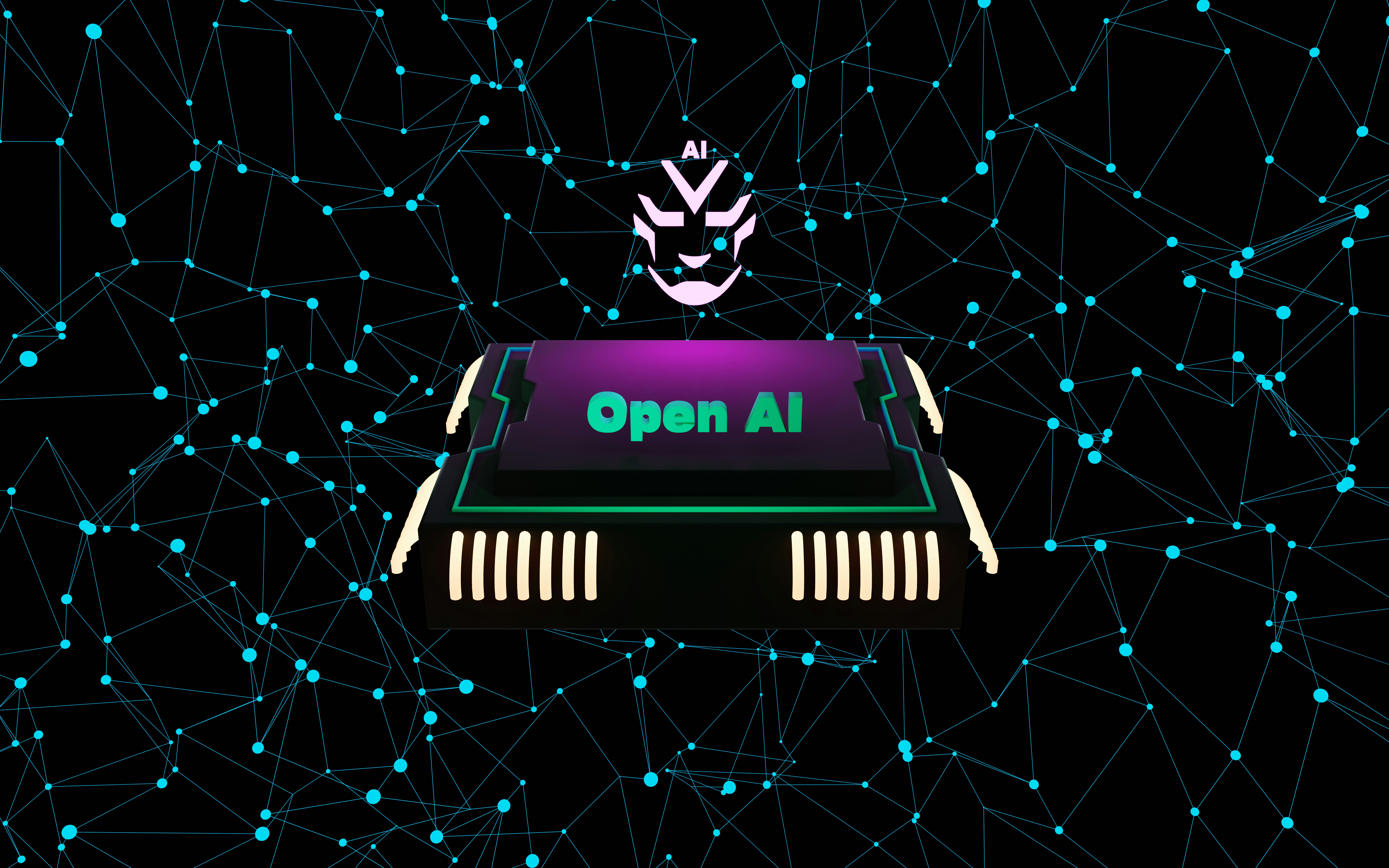
Introduction to Generative AI
Generative AI refers to a subset of artificial intelligence that focuses on creating new content, whether it be text, images, audio, or other forms of data, by learning from existing resources. This technological advancement leverages algorithms to analyze patterns and generate outputs that mimic the learned examples. Fundamentally, generative AI encompasses various core technologies such as generative adversarial networks (GANs), variational autoencoders (VAEs), and transformer models, which have significantly contributed to its growth and capabilities in recent years.
The development of generative AI can be traced back to early concepts in neural networks and machine learning. However, it gained considerable traction in the past decade with the introduction of more sophisticated algorithms and increased computational power. GANs, for instance, utilize a two-part framework involving a generator that creates data and a discriminator that evaluates the authenticity of the generated output. This adversarial process plays a key role in improving the quality of the content produced. Transformer models, especially those like OpenAI’s GPT series, have revolutionized natural language processing, enabling the generation of human-like text that serves various applications in business, marketing, and sales.
Placed within the wider framework of artificial intelligence, generative AI offers innovative solutions that can enhance efficiency, personalization, and creativity across industries. Its ability to produce original content has implications for market strategy, customer engagement, and product development, making it a critical area of focus for organizations looking to remain competitive in an increasingly digital world. By understanding its core mechanisms and historical evolution, businesses can better grasp the transformative power of generative AI and explore its potential applications in their operations.
Importance of Generative AI in Contemporary Business
In the rapidly evolving landscape of contemporary business, the advent of generative AI has emerged as a critical factor in reshaping operations and strategies across various sectors. Generative AI refers to algorithms that can create content, predict outcomes, and generate insights, fundamentally altering the traditional paradigms of business functioning. By automating repetitive tasks, enhancing decision-making processes, and fostering innovation, generative AI presents businesses with a plethora of advantages that are increasingly becoming indispensable.
One of the primary benefits of generative AI is its ability to streamline business operations. For instance, companies can implement AI-driven systems to automate customer service inquiries, significantly reducing the time spent on routine tasks. This automation not only enhances operational efficiency but also allows employees to focus on more strategic initiatives, thereby improving overall productivity. Furthermore, generative AI tools can analyze large datasets quickly, providing actionable insights that would take a human analyst significantly longer to uncover.
The capacity of generative AI to improve decision-making cannot be overstated. By utilizing predictive analytics, businesses are equipped to make informed decisions based on trends and data rather than intuition alone. This data-driven approach minimizes risks and maximizes success by allowing organizations to respond proactively to market changes and customer preferences. Additionally, the innovative potential of generative AI fosters creativity, enabling enterprises to develop new products and services that meet the evolving demands of consumers.
Overall, the importance of generative AI in contemporary business cannot be overlooked. Its ability to streamline processes, enhance decision-making, and boost innovation positions it as a vital asset for organizations seeking to thrive in a competitive environment. As businesses continue to embrace this transformative technology, it is clear that generative AI will play a paramount role in shaping the future of various industries.
Enhancing Marketing Strategies with Generative AI
Generative AI is significantly transforming marketing strategies by enabling businesses to create more personalized and engaging content. One of the hallmark features of generative AI is its ability to analyze vast amounts of customer data, which informs personalized content creation tailored to the unique preferences and behaviors of individual consumers. By leveraging this technology, marketers can generate compelling articles, social media posts, and even email campaigns that resonate with the target audience, thereby fostering a deeper connection and enhancing customer engagement.
Moreover, targeted advertising strategies have gained a new dimension through the use of generative AI. By combining data analytics with machine learning algorithms, businesses can identify and segment their audience more effectively. This allows for more precise ad targeting, ensuring that promotional materials reach consumers who are not only interested but also primed to make a purchase. Consequently, the implementation of generative AI in marketing strategies leads to a higher return on investment, as resources are allocated more efficiently toward reaching potential customers.
Furthermore, generative AI plays a pivotal role in optimizing user experiences. By utilizing AI-driven insights, businesses can personalize the customer journey at various touchpoints, from website navigation to product recommendations. This enhanced user experience not only captures the attention of customers but also fosters loyalty and retention. For instance, a business that employs generative AI can analyze user interactions and adapt its offerings accordingly, ensuring customers feel valued and understood.
In essence, the integration of generative AI within marketing strategies allows companies to move beyond traditional methods, embracing a future where personalized content, targeted advertising, and optimized user experiences converge to create impactful marketing efforts. The ongoing evolution of this technology will undoubtedly continue to offer innovative solutions that reshape the marketing landscape.
Generative AI’s Role in Sales Optimization
In the ever-evolving landscape of business, the application of generative AI is proving to be a game changer, especially in the realm of sales optimization. One of the most significant advantages that generative AI offers is its ability to harness predictive analytics. By analyzing vast datasets, generative AI algorithms can provide accurate sales forecasts, allowing organizations to make informed decisions and allocate resources more effectively. Companies can anticipate customer needs and preferences, which facilitates timely product offerings that align with market demands.
Moreover, generative AI significantly enhances the process of lead generation through automation. Traditional methods of lead generation can be time-consuming and labor-intensive. In contrast, generative AI streamlines this process by identifying potential leads based on data patterns and buyer behavior. This not only saves valuable time for sales teams but also ensures that the leads generated are of higher quality, increasing the likelihood of conversion. By automating this foundational aspect of sales, businesses can amplify their outreach and focus their efforts on nurturing high-potential prospects.
Another critical aspect of utilizing generative AI in sales optimization lies in its ability to enhance personalized customer interactions. Through advanced algorithms, generative AI can analyze customer data to create tailored communications and recommendations that resonate with individual preferences. This level of personalization fosters stronger relationships between businesses and their customers, ultimately driving conversions. When customers feel understood and valued, they are more likely to engage and purchase, elevating overall sales performance.
By integrating generative AI into their sales strategies, organizations can optimize processes, improve lead quality, and provide personalized experiences. This transformative power not only drives efficiency but also strengthens customer relationships, leading to sustainable business growth in a competitive market.
Case Studies: Success Stories of Generative AI in Action
Generative AI has proven its transformative potential across various industries, exemplified by numerous successful case studies. One prominent example is the global retail giant, Walmart. In an effort to enhance customer experience and optimize inventory management, Walmart implemented a generative AI model capable of predicting product demand. By analyzing data including sales history and seasonal factors, the model generated accurate forecasts, enabling Walmart to streamline stock levels, reduce waste, and improve service delivery. The outcome was a marked increase in operational efficiency, ultimately contributing to a higher customer satisfaction rating.
Another noteworthy instance is Netflix, which leverages generative AI to enhance its content recommendations. By utilizing advanced algorithms, the platform generates personalized viewing suggestions based on user preferences and viewing history. This tailored approach ensures that subscribers are continuously engaged with content that aligns with their interests, resulting in increased user retention and a greater overall viewing hours, which have been pivotal to Netflix’s sustained success in the competitive streaming market.
In the realm of healthcare, a groundbreaking application of generative AI can be observed with the pharmaceutical company, Pfizer. During the development of new drugs, Pfizer harnessed generative AI to analyze vast datasets, enabling faster identification of potential compounds. This significantly reduced the time required for research and development, allowing Pfizer to bring promising treatments to market quicker than traditional methods would allow. The lessons learned from these applications underscore the necessity for businesses to embrace technological innovation while remaining agile in their strategies to accommodate the evolving landscape.
These real-world examples illustrate the vast possibilities of generative AI across different sectors. By analyzing successful implementations, other organizations can glean valuable insights and strategies, helping them to navigate the intricacies of integrating AI into their operations effectively.
Challenges and Ethical Considerations
The advent of generative AI technology presents numerous opportunities, yet it also introduces a series of challenges and ethical dilemmas that require careful consideration. One of the most pressing issues is data privacy. As generative AI systems often rely on vast amounts of personal data to learn and produce content, there is a significant risk of compromising individual privacy. Companies must navigate complex legal frameworks such as the General Data Protection Regulation (GDPR) in Europe, which enforces strict guidelines on data collection and usage. Ensuring compliance not only serves to protect consumer privacy but also builds trust between businesses and their clients.
Another crucial challenge lies in the potential for biases inherent in AI-generated content. Generative AI models are trained on existing datasets, which may reflect cultural, social, or economic biases. As a result, the AI can perpetuate these biases, leading to outputs that may be discriminatory or unrepresentative. This phenomenon raises ethical questions about the responsibility of businesses in ensuring that their AI systems produce fair and equitable content. Rigorous auditing of AI systems is necessary to identify biases, and continuous efforts should be made to curate diverse datasets.
Furthermore, there is a pressing need for the development of ethical guidelines surrounding the use of generative AI. Businesses must establish clear protocols that dictate how AI-generated content is created, reviewed, and disseminated. These guidelines should address issues such as transparency, accountability, and the intended use of AI outputs. By prioritizing ethical considerations, organizations can mitigate risks associated with generative AI and foster a culture of responsible innovation. As the technology evolves, ongoing discussions among stakeholders, including technologists, ethicists, and policymakers, will be vital in shaping a responsible framework for the future deployment of generative AI.
Future Trends in Generative AI for Business
The landscape of generative AI is evolving rapidly, shaping various aspects of business, marketing, and sales. As we look toward the future, several key trends are poised to influence how organizations leverage these technologies to remain competitive. One prominent trend is the rise of personalized customer experiences. Leveraging generative AI, businesses can analyze customer data and preferences to create tailored offerings, enhancing customer engagement and satisfaction.
Another emerging trend is the integration of generative AI with other advanced technologies, such as blockchain and Internet of Things (IoT). This convergence will enable businesses to automate complex processes, enhance data security, and streamline operations. By incorporating generative AI models, organizations can improve decision-making by predicting market shifts and consumer behavior more accurately. This proactive approach will be crucial in navigating the challenges posed by rapidly changing market demands.
As generative AI capabilities expand, so does the need for ethical considerations in its application. Companies will need to prioritize responsible AI usage, ensuring that generative technologies do not propagate biases or misinformation. This responsibility will also extend to transparent data handling practices, fostering trust among consumers and stakeholders. Organizations that invest in ethical frameworks for AI deployment will likely gain a competitive edge in the marketplace.
Moreover, the future of generative AI will see an increase in collaboration between humans and machines. As generative AI tools become more sophisticated, they will serve as vital assistants, augmenting human creativity and innovation. This symbiotic relationship will lead to the development of new products, services, and marketing strategies that were previously unimaginable.
To prepare for these imminent changes, businesses must remain agile and adaptable, actively seeking to integrate generative AI solutions into their operations. By staying informed about emerging trends and proactively embracing new technologies, organizations can position themselves for sustained success in an increasingly automated and customer-centric business environment.
How to Integrate Generative AI into Your Business Strategy
The integration of generative AI into your business strategy requires a multifaceted approach that encompasses evaluation, training, and cultural shifts. The first step in this journey is to carefully evaluate various AI tools available in the market. It is crucial to identify tools that align with your business objectives, whether that be enhancing customer service, personalizing marketing campaigns, or streamlining operations. Assessing the capabilities of these tools, such as their user-friendliness and the quality of insights they generate, will help you make informed decisions that set the foundation for successful integration.
Once suitable generative AI tools have been selected, the next step is to ensure that your staff is adequately trained in their use. This involves developing a comprehensive training program that educates employees not only on how to operate the AI tools effectively but also on the underlying principles of generative AI technologies. Providing hands-on training sessions and resources will empower your workforce to leverage AI in their daily activities. Additionally, fostering collaborations between technology experts and end-users during the training process can facilitate a smoother transition and enhance overall effectiveness.
Creating a culture that embraces innovation is equally vital for the successful integration of generative AI. Companies should encourage an environment where experimentation with AI-driven solutions is welcomed. Promoting open communication about the benefits and challenges of using AI will help alleviate any apprehensions staff may have. Leadership plays a crucial role in this shift by demonstrating a commitment to adopting new technologies and rewarding innovative ideas that utilize generative AI. By taking these steps, businesses can position themselves to harness the transformative power of generative AI, setting the stage for enhanced efficiency, creativity, and competitiveness in their respective markets.
Conclusion: The Future is Generative AI
As we reflect on the transformative power of generative AI across various sectors, it becomes evident that this technology is not merely a tool but a paradigm shift in how businesses operate. The integration of generative AI into marketing and sales strategies presents opportunities to enhance customer engagement and increase efficiency. It enables organizations to personalize experiences on an unprecedented scale, thus fostering stronger connections between brands and consumers.
Generative AI’s capability to analyze vast amounts of data allows businesses to identify patterns and trends that were previously difficult to discern. This deep analytical prowess aids in crafting targeted campaigns that resonate with specific audiences, ultimately leading to improved conversion rates. Moreover, by automating repetitive tasks, generative AI frees up human resources so that teams can focus on strategic initiatives, thereby driving innovation and growth.
Furthermore, the potential for generative AI to revolutionize product development cannot be overlooked. By harnessing advanced algorithms, companies can iterate designs and concepts at a speed that aligns with the fast-paced digital marketplace. This degree of responsiveness not only enhances competitiveness but also promotes a culture of continuous improvement within organizations.
In essence, the role of generative AI is becoming increasingly vital in the modern business landscape. Its application extends beyond mere enhancements to operational practices; it signifies a broader transformation in the capacity for organizations to adapt and thrive in an ever-evolving digital age. As we advance, embracing generative AI will be crucial for businesses aiming to maintain relevance and achieve sustainable success. The future is indeed generative AI, and its influence will continue to shape how industries redefine their approaches to marketing, sales, and beyond.





